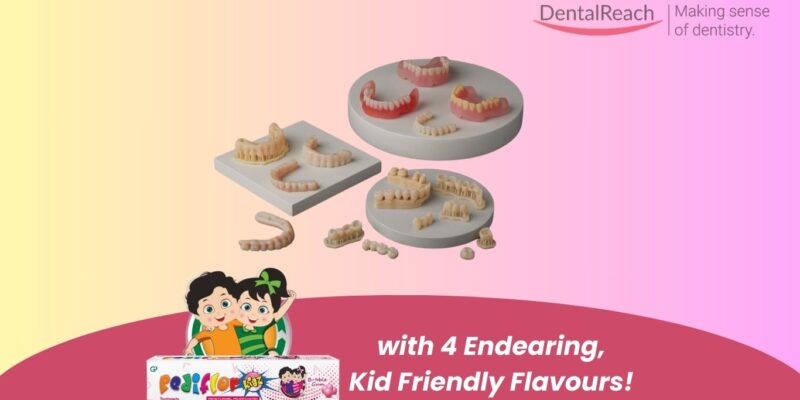The dental industry stands at the forefront of 3D printing innovation, with technology advancing rapidly since its inception in 1981. As we move into 2025, 3D printing has become an integral part of modern dentistry, offering unprecedented precision and efficiency. As more and more dentists wish to invest in one, here’s what you must know about 3D printers.
Current Applications of 3D printing in Dentistry
- Surgical guides
- Dental models
- Clear aligners
- Night guards
- Denture bases and complete dentures
- Temporary restorations
- Custom impression trays
- Castable wax parts
Terms to be familiar with
Accuracy — A measure of how close the dimensions of the final 3D printed part match up to the dimensions of the digital model.
Build Platform — The surface on which parts are printed. The build platform is the length and wide of the build volume.
Build Volume — The 3-dimensional space limits a printer can produce. This is calculated by multiplying the length, width, and height in which it can print.
CAD — Computer Assisted Design or digital 3D design software
CAM — Computer Assisted Manufacturing or software designed to drive production systems including 3D printers and CNC mills.
Layer Height/Thickness — The size of an individual layer of the printed part on the z-axis of the build volume. Many printers can use variable layer heights depending on the material and desired results. Smaller layer heights can produce smoother, more detailed parts, but often take longer to complete the print run.
Resolution — A measure of the smallest 2-dimensional detail a 3D printer can produce on the x- and y-axes of its build volume. For DLP printers this is usually the pixel size. For printers that use lasers, this is usually the smallest spot size.
.stl — A common 3D model file format used in dentistry. Most digital impression and benchtop scanners produce .stl files. The name is an abbreviation of stereolithography.
Core Technologies
- Stereolithography (SLA):
- Uses UV laser for resin polymerization
- Produces highly detailed, smooth surfaces
- Requires support structures
- Ideal for precise dental applications
- Digital Light Processing (DLP):
- Employs specialized light projectors
- Offers rapid production cycles
- Delivers smooth surface finishes
- Cost-effective for dental practices
- LCD Technology:
- Uses LED array with LCD screen
- Simplified process without moving parts
- High accuracy and precision
- Produces consistently smooth surfaces
- Advanced Manufacturing Options:
- SLM/SLS for metals and ceramics
- MultiJet/PolyJet for multi-material printing
- Suitable for specific dental applications
Material Considerations
- Biocompatible resins
- Dental-grade ceramics
- Castable waxes
- Multiple material options in single prints
- Third-party material compatibility
Digital Workflow Integration
- Open architecture systems
- STL file compatibility
- CAD/CAM software integration
- Automated processing capabilities
Key Factors for Selection
- Build Volume:
- Single unit production
- Batch processing capabilities
- Practice-specific requirements
- Speed and Efficiency:
- Print time considerations
- Material usage optimization
- Post-processing requirements
- Accuracy and Resolution:
- Precise dimensional accuracy
- Consistent results
- Surface finish quality
ROI Considerations
- Material costs
- Time efficiency
- Labor savings
- Production capacity
- Training requirements
Future Trends
- Direct printing of permanent restorations
- Improved materials for intraoral use
- Enhanced automation
- Faster print speeds
This updated guide reflects the latest advancements in dental 3D printing technology while maintaining focus on practical applications and decision-making factors for dental professionals.
Questions to ask if you are planning to buy a 3D printer
Technology & Performance Questions:
- What is the printer’s accuracy and precision across the build platform?
- What is the maximum build volume and throughput capacity?
- What materials are currently validated for this printer?
- What is the speed and print time for specific dental applications?
Software & Compatibility:
- Which CAD software systems are compatible?
- Does the system include dedicated dental software?
- Can it integrate with existing practice management systems?
- Is it compatible with third-party materials?
Materials & Applications:
- What biocompatible materials are available?
- Which specific dental applications are FDA-cleared?
- What new materials and applications are in development?
- What are the material costs per print?
Workflow & Post-Processing:
- What post-processing equipment is needed?
- How automated is the workflow from design to final product?
- What is the learning curve for staff training?
- How much manual intervention is required during printing?
Support & Maintenance:
- What type of training and support is included?
- What is the warranty coverage?
- How often does the printer require maintenance?
- What is the expected lifespan of the printer?
Cost Considerations:
- What is the total cost of ownership, including materials and maintenance?
- Are there any recurring software subscription fees?
- What financing options are available?
- How long until return on investment?
Future-Proofing:
- Can the printer be upgraded as technology advances?
- What is the manufacturer’s roadmap for future developments?
- How often are new materials and applications released?
- Does the system allow for expansion with growing practice needs?
Technical Requirements:
- What are the space and ventilation requirements?
- What are the power and internet connectivity needs?
- What additional equipment is needed for a complete workflow?
- Are there any special storage requirements for materials?
Further reading
- Noah Levine. Buyers Guide: Dental 3D Printers. https://www.dentalcompare.com/Buyers-Guides/349021-Buyers-Guide-Dental-3D-Printers/#ctl05_ctl01_divContainer
- ADA. Dental Innovation: How to choose a 3-D printer. https://www.ada.org/resources/practice/practice-management/how-to-choose-a-3d-printer















Comments